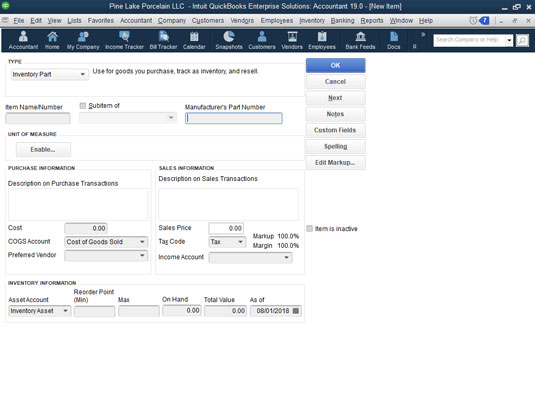

To track cash from sales that have not been deposited yet, use a pre-created account called Undeposited funds, instead. Use a Cash on hand account to track cash your company keeps for occasional expenses, also called petty cash. NOTE: you can purchase an importable excel version of this chart of accounts BALANCE SHEET ACCOUNTS Account Type Here is a list of all the default accounts you can create with QuickBooks Online using the Account Type + Detail Type workflow: This YouTube video will explain how to use this list and how you can import a list of accounts into your QuickBooks Online: Third, I do have a free google sheets (downloadable to excel) spreadsheet with a complete list of accounts by industry and company type: Second, if you want an IMPORTABLE chart of accounts for QuickBooks, you can purchase my kit for my customized “Ultimate Chart of Accounts” for Online or Desktop that I setup for my clients, here: If you keep the account, you will get 30% off for 12 months, best deal out there! Once you start using this new system, your reports will start to be more meaningful and accurate.First, If you need to setup a free 30-day trial of QuickBooks Online use this link: So for those of you who work with projects or jobs, take a look at your Job Profitability Detail Report and see if you have any “No item.” Then take a look at your Items Profitability report and double-click on the various items to see if you are missing expenses. When you use the Items tab, you can then select the appropriate Item from your Items List. When do you use which tab? A good rule of thumb is to use the Items tab when it’s for a customer job/project. This particular expense won’t appear at all on the Item Profitably report (because no item was used) and it shows as “No Item” on the Job Profitability Detail report. While that may be the correct account for that expense, your reports will be inaccurate. Most people use the Expense tab and select the expense or Cost of Goods account (like Job Materials). You have a choice of using either the Expense tab or the Items tab. On the Invoice, you have no choice but to use an Item, but not on the bill (or check or credit card charge). Let’s use the example below of lighting fixtures. I will admit that in my early QuickBooks, I was guilty of this. A common mistake is to use Items inconsistently.


 0 kommentar(er)
0 kommentar(er)
